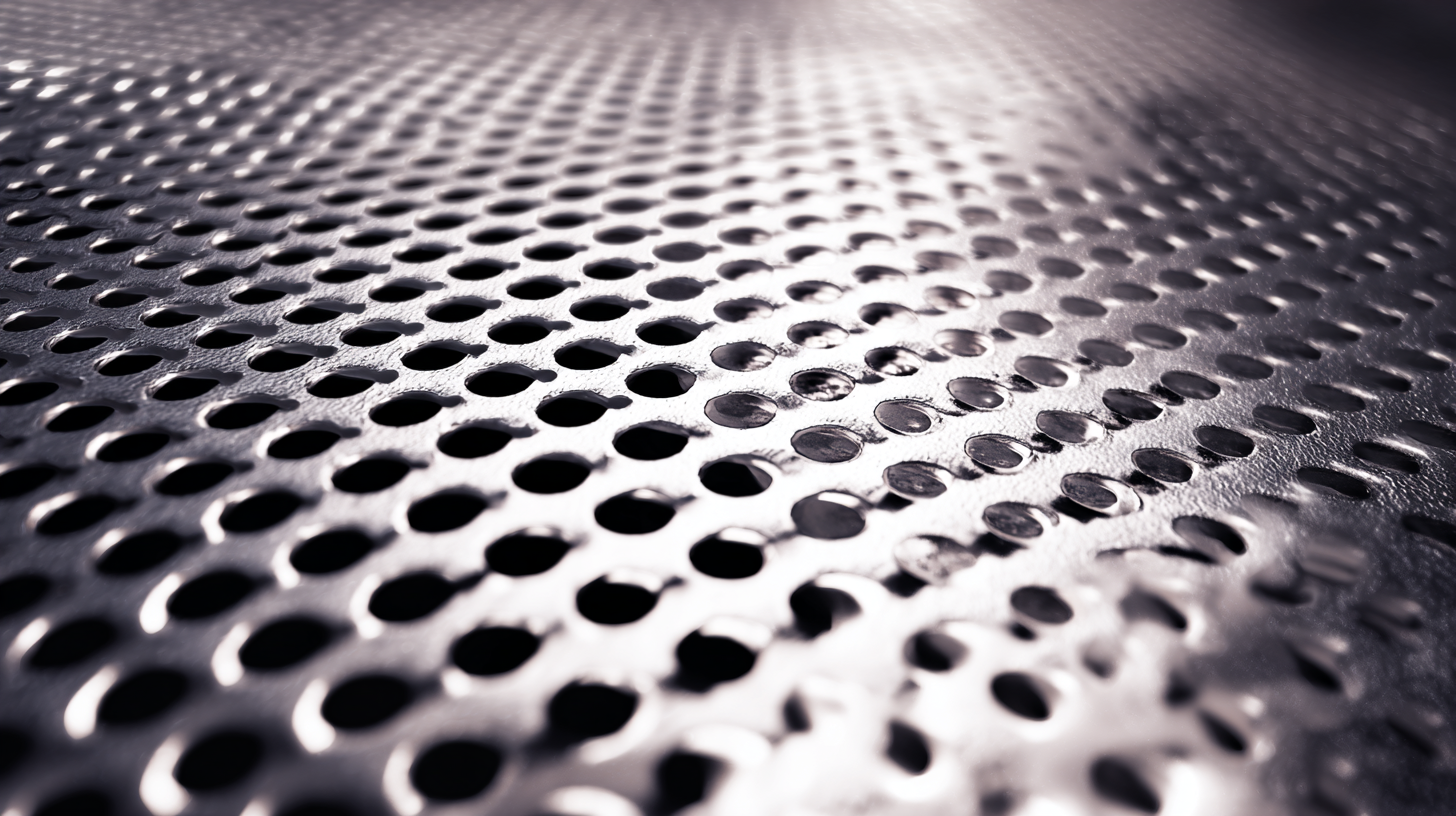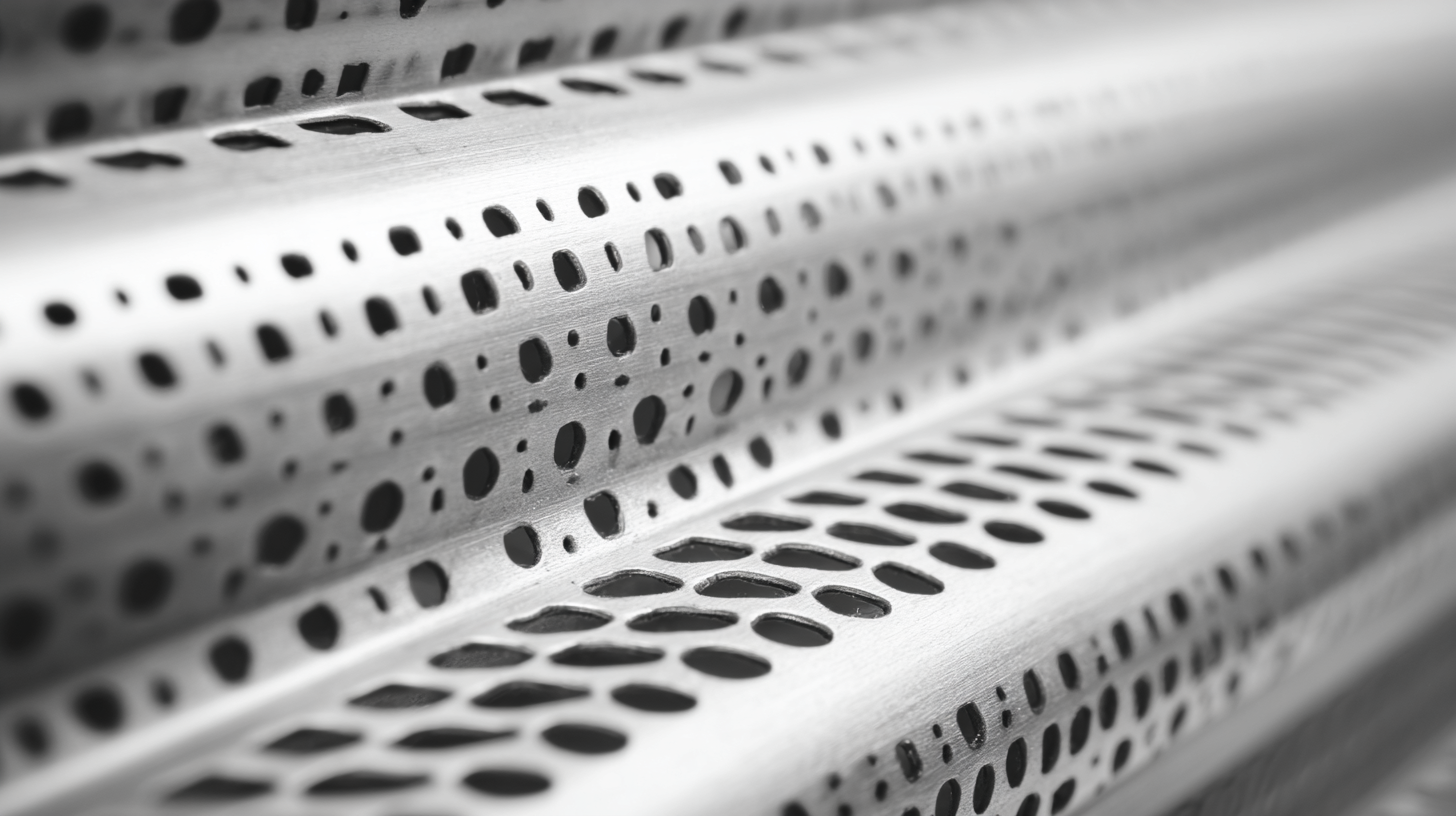In the rapidly evolving landscape of global procurement, the demand for versatile and cost-effective materials is at an all-time high, particularly for construction and manufacturing sectors. According to a recent report by MarketsandMarkets, the global perforated mesh market is projected to reach USD 2.34 billion by 2025, thereby emphasizing the growing reliance on products like Perforated Mesh Sheet. As industries seek innovative alternatives that not only fulfill their functional requirements but also enhance sustainability, it becomes imperative to explore new frontiers in material technology.

This blog will delve into the emerging trends and alternatives within the Perforated Mesh Sheet domain, providing insights that cater to the procurement needs of businesses looking to thrive in an increasingly competitive environment.
Perforated mesh sheets are versatile materials widely used across various industries, offering both functionality and aesthetic appeal. These sheets are available in several types, each designed to fulfill specific needs. Metal perforated sheets, for instance, are favored for their durability and structural integrity, making them ideal for applications in construction, automotive, and machinery sectors. The size and shape of the holes can be customized, allowing engineers and designers to create tailored solutions for air flow, light filtration, and even decorative designs.
In contrast, plastic perforated sheets are lightweight yet robust, often employed in packaging, agriculture, and food processing. Their resistance to corrosion and chemicals makes them particularly valuable in settings where exposure to harsh environments is a concern. Additionally, perforated sheets made from composite materials blend the benefits of both metal and plastic, providing lightweight options with high strength and versatility. Understanding the different types of perforated mesh sheets and their respective applications can empower global procurement teams to make informed decisions that meet their project requirements effectively.
The global perforated metal sheets market is experiencing significant growth, projected to soar from USD 2.9 billion in 2025 to USD 5.3 billion by 2035, reflecting a compound annual growth rate (CAGR) of 6.2%. This surge highlights the increasing demand for innovative perforated mesh materials across various industries, including construction, automotive, and consumer goods. As companies seek to optimize their procurement processes, understanding the key features of these materials becomes essential.

When exploring different types of perforated mesh sheets, several attributes stand out. First, durability is crucial; materials often include stainless steel and aluminum, known for their resistance to corrosion and wear, thereby ensuring a longer lifecycle. Second, versatility in design allows for an array of hole patterns and sizes, catering to specific aesthetic or functional requirements. Finally, ease of customization plays a vital role in global procurement, enabling manufacturers to adapt their perforated sheets to meet unique project specifications. With these factors in mind, organizations can make informed decisions that enhance their product offerings while remaining competitive in an evolving market.
The landscape of perforated mesh sheets is evolving, with innovative alternatives emerging that cater to today's specific procurement needs. One prominent alternative is the use of laser-cut mesh, which offers superior precision and customizable designs. According to a report from MarketsandMarkets, the global market for laser cutting equipment is expected to reach $6.5 billion by 2027, illustrating the industry's shift towards these high-tech solutions. Laser-cut meshes provide better airflow and are less prone to damage, making them an attractive option for various applications, including architecture and industrial design.
However, these innovative alternatives come with their own set of challenges. While laser-cut meshes enhance design flexibility, they often involve a longer lead time and higher production costs compared to traditional perforated sheets. A study by Grand View Research indicates that while high-tech alternatives like 3D-printed mesh are gaining traction, they account for only a fraction of the overall mesh market, valued at approximately $12.9 billion in 2020. Therefore, while the advantages of customization and efficiency are evident, procurement professionals must weigh these benefits against the potential drawbacks of cost and availability when considering their options for mesh materials.
Perforated mesh sheets have carved a niche across various industries due to their versatility and functionality. In sectors such as automotive, construction, and food processing, these sheets serve critical roles, from sound dampening to air filtration. According to a report by Grand View Research, the global perforated metal market is projected to reach USD 5.32 billion by 2025, indicating a steadfast demand driven by industry-specific applications. The varied thickness, hole size, and material composition of perforated mesh sheets allow for tailored solutions, enhancing efficiency in manufacturing and design.
When considering perforated mesh sheets, it is essential to evaluate their specific application requirements. For instance, in the automotive sector, sheets designed with precise hole patterns can significantly reduce weight without compromising strength, thereby contributing to fuel efficiency. In the food industry, using corrosion-resistant materials ensures hygiene and longevity, critical for compliance with health regulations.
**Tip:** Always consult with manufacturers about the material properties, such as tensile strength and corrosion resistance, to ensure the perforated mesh sheet meets your specific needs. Understanding the desired airflow versus strength ratio can also lead to better selection, particularly in applications involving high temperatures or pressure variations.

As industries evolve, the demand for high-performance perforated mesh sheets is increasingly shaped by cutting-edge technologies. Future trends in this sector are looking towards more sustainable materials and advanced manufacturing techniques that prioritize not only efficiency but also environmental responsibility. Innovations such as 3D printing and bio-based polymers are gaining traction, allowing businesses to tailor mesh designs to specific needs while significantly reducing their carbon footprint. These developments not only enhance the functional properties of perforated sheets but also align with the global push towards circular economies.
Moreover, smart technology integration is poised to revolutionize the way perforated mesh products are manufactured and utilized. The incorporation of IoT (Internet of Things) capabilities enables real-time monitoring of mesh performance, leading to predictive maintenance and optimized production processes. This shift not only enhances operational efficiency but also meets the growing consumer demand for transparency and quality assurance in procurement. As we look to the future, the collaboration between technology and tradition will be key in addressing the global market's evolving needs and setting new benchmarks for the perforated mesh industry.
This chart illustrates the projected growth and adoption rates of various innovative alternatives to traditional perforated mesh sheets across global markets from 2023 to 2028. The data showcases the increasing demand for sustainable materials and advanced technology in perforated mesh applications.
